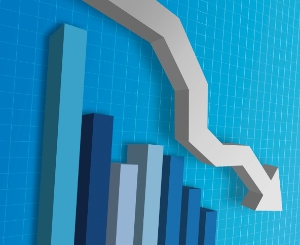Price decline continues - TMP
Asking price growth nationwide continues to slow new Trade Me Property data shows - and prices could fall further once the foreign buyer ban is in force shortly.
Monday, September 17th 2018, 11:00AM
by Miriam Bell

The national average asking price dipped slightly for a third consecutive month, falling by 0.3% on July to $630,600 in August, according to the latest Trade Me Property Price Index.
However, the national average asking price was still up by 2.8% on August 2017.
Head of Trade Me Property Nigel Jeffries says that all but one region saw a year-on-year increase in prices, although none reached a record average asking price in August.
“While almost every region has seen average asking prices increase on this time last year, we typically see growth like this accompanied by record prices.
“That’s not the case this time, instead we’re seeing signs that the brakes are being applied across the country.”
Jeffries said while it is standard for property prices to slow in winter, this year they have cooled much more than in recent years.
There are a number of factors – including affordability constraints and a range of Government initiatives targeting the property market.
But, despite this slowdown, there was still plenty of activity in August, with both listings and views of listings up, he says.
“The only region in the country that was down on this time last year was the Bay of Plenty where the average asking price dipped for the first time since January 2013, falling 0.3% to $598,800 in August after a long period of solid growth.”
The country’s two biggest markets - Auckland and Wellington - have also been feeling the winter chill.
In Auckland, the average asking price continued to fall in August, slipped by 0.1% on July to $895,050, which its lowest point since September 2017.
The number of property listings in the region was up 9.5% on last year and the average number of views in the first two days onsite was down 2.4% on the year prior.
Jeffries says this means that, for the first time in a long time, Auckland buyers are in a prime position as the rate of growth has finally eased with less competition and more stock on the market.
In Wellington, the average asking price dipped by 0.3% on July to $579,750 – but the region saw a 11.5% year-on-year price increase.
Jeffries says buyers in the region have fewer options, with the number of property listings down 6.4% on last year.
“Demand continues to grow in the capital with an 18.4% increase in the number of Wellington properties being watch-listed.
“The city’s property market is one to watch in spring. With less stock and growing demand we expect to see it bounce back pretty quickly from this winter slump.”
Meanwhile, Westpac is warning people to expect further price falls once the foreign buyer ban comes into force in the next few weeks.
The bank’s chief economist, Dominick Stephens says the impact on the market will clearly be negative although it is hard to say how negative.
“What we do know is that the foreign buyer ban will have the biggest impact on Auckland’s North Shore, Central City, Howick and Henderson-Massey districts, as well as Queenstown Lakes district.
“These are the places in which foreign buyers account for more than 5% of sales at present.”
Stephens adds that when Toronto instituted a high stamp duty on foreign buyers house prices in the region fell by around 5%.
“But New Zealand’s foreign buyer ban has been watered down, and is probably weaker than Toronto’s stamp duty.”
Read more:
Foreign buyer ban hangover pending
| « Housing crisis needs building surge | Capital price gains » |
Special Offers
Comments from our readers
No comments yet
Sign In to add your comment
| Printable version | Email to a friend |


